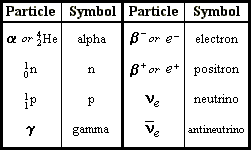You can use these symbols in your questions or assignments.
Chemistry and Physics
| Symbol | Code |
|---|---|
<s:abarrow> |
|
 |
<s:abline> |
 |
<s:acsource> |
 |
<s:alphaparticle> |
 |
<s:aromaticbond> |
 |
<s:aromaticbondshort> |
<s:cbarrow> |
|
<s:cearrow> |
|
 |
<s:coldrtarrow> |
<s:daarrow> |
|
<s:dcarrow> |
|
<s:dearrow> |
|
 |
<s:decrtarrow> |
 |
<s:doublebond> |
<s:eaarrow> |
|
<s:ebarrow> |
|
 |
<s:eertarrow> |
 |
<s:electron> |
 |
<s:emf> |
<s:emf2> |
|
 |
<s:emfbar> |
 |
<s:energyarrowlong> |
 |
<s:energyarrowshort> |
 |
<s:energyarrowsmall> |
 |
<s:H2Ortarrow> |
| ℏ | <s:hbar> |
<s:hbarsm> |
|
 |
<s:hbarred> |
 |
<s:inductor> |
| • | <s:lewisdot> |
 |
<s:ml> |
 |
<s:neutron> |
 |
<s:nuclearparticles> |
 |
<s:oaline> |
 |
<s:orb_d> |
 |
<s:orb_e> |
 |
<s:orb_none> |
 |
<s:orb_u> |
 |
<s:orb_ud> |
 |
<s:positron> |
 |
<s:proton> |
 |
<s:ptrtarrow> |
<s:revrxarrow_cancel> |
|
 |
<s:revrxarrow> |
 |
<s:revrxarrow1> |
| ⇄ | <s:revrxarrow2> |
 |
<s:revrxarrowH20> |
 |
<s:revrxarrowhv> |
 |
<s:revrxarrowred> |
 |
<s:revrxnarrowk> |
 |
<s:revrxnarrowkco> |
 |
<s:revrxnarrowko2> |
 |
<s:revrxnk1> |
 |
<s:revrxnk2> |
 |
<s:revrxnkf> |
 |
<s:rtarrowac> |
 |
<s:rtarrowAcid> |
 |
<s:rtarrowAcidic> |
 |
<s:rtarrowacidic> |
 |
<s:rtarrowalpha> |
 |
<s:rtarrowBacteria> |
 |
<s:rtarrowBase> |
 |
<s:rtarrowBasic> |
 |
<s:rtarrowbeta> |
 |
<s:rtarrowcatalyst> |
 |
<s:rtarrowClcat> |
 |
<s:rtarrowDelta> |
 |
<s:rtarrowE> |
 |
<s:rtarrowEc> |
 |
<s:rtarrowelec> |
 |
<s:rtarrowelecap> |
 |
<s:rtarrowelect> |
 |
<s:rtarrowF> |
 |
<s:rtarrowH20> |
 |
<s:rtarrowHeat> |
 |
<s:rtarrowheatpressure> |
 |
<s:rtarrowhex> |
 |
<s:rtarrowhotCuOs> |
 |
<s:rtarrowhv> |
 |
<s:rtarrowk> |
 |
<s:rtarrowk1> |
 |
<s:rtarrowk2> |
 |
<s:rtarrowk3> |
 |
<s:rtarrowk4> |
 |
<s:rtarrowL> |
 |
<s:rtarrowlight> |
 |
<s:rtarrowNOcat> |
![reaction arrow identifying the presence of an oxidant [Ox]](images/stag/lc-rtarrowox.gif) |
<s:rtarrowox> |
 |
<s:rtarrowp> |
 |
<s:rtarrowPt> |
 |
<s:rtarrowpt825> |
 |
<s:rtarrowradeng> |
 |
<s:rtarrowsf> |
 |
<s:rtarrowyeast> |
 |
<s:singlebond> |
 |
<s:triplebond> |
 |
<s:wedgearrow> |